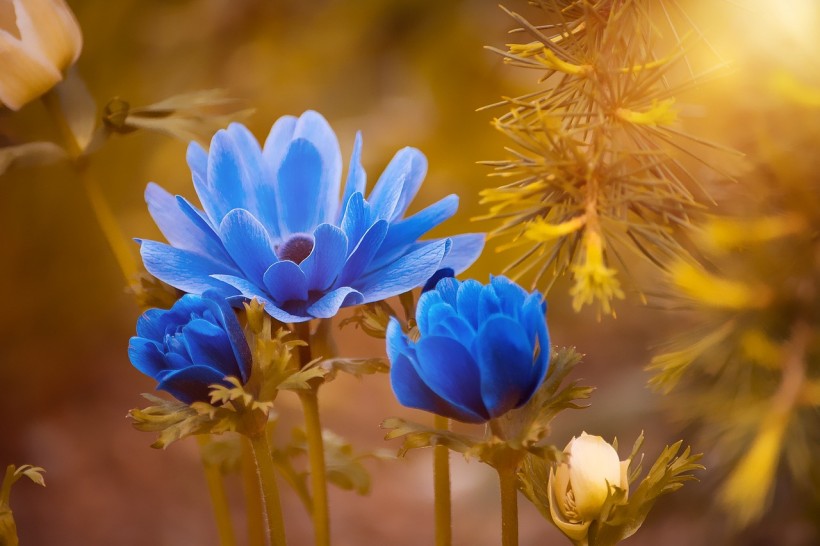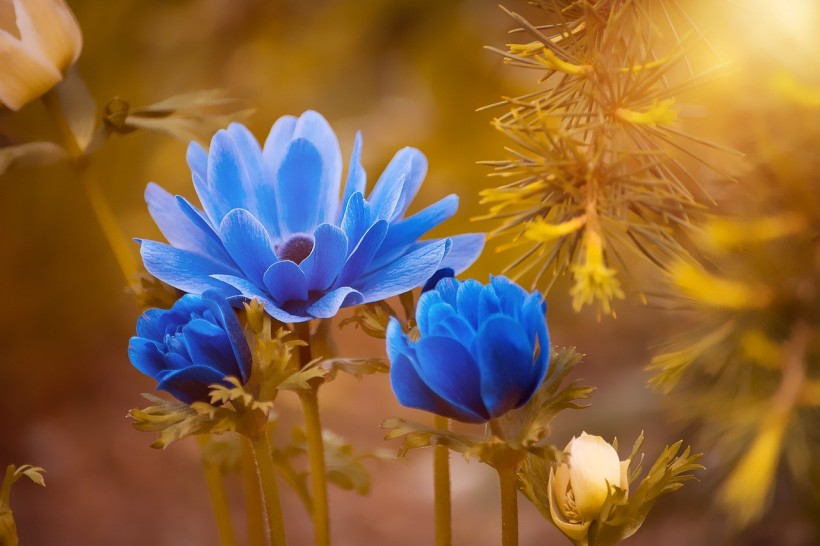[ad_1]
Blue is a color that we often see in non-living things, including clothes, furniture, material objects, paintings, and infrastructures. However, blue is rare in nature as there are only very few plants and animals that appear to be blue. This pigmentation can be seen in the blue jay bird, blue poison dart frog, blue sea star, and other animal species. Some plant species resemble the color blue.
In nature, green is the most common color and it can be found in different flora, fauna, and even natural phenomena such as the northern lights caused by geomagnetic storms following a solar flare or other types of solar storms.
Ranging from leaves to grass, fruits, vegetation, and snakes, green pigmentation seems to be everywhere surrounding us and this color has been a symbol of Mother Nature.
Why Blue is Rare in Nature?

Blue is very rare in nature, with less than 10% of plants have blue flowers and fewer animals having them, simply because there is really no true-blue color or pigment in nature, according to The University of Adelaide in Australia. This is because both plants and animals engage in “tricks” using light to appear blue. This means that the color of nature has something to do with light, which contains wavelengths of different colors, relative to the eye of the receiver.
For plants, the color of blue is achieved by mixing natural pigments, with the most commonly used color being red pigments, called anthocyanins; whose appearance can be changed based on varying acidity, the Australian university says. On the other hand, animals have a harder time turning a color themselves into blue. Instead, they rely on creating structures in relation to a light’s wavelength such as the Blue morpho butterfly.
For animals, experts further explain that blue, in the context of being a color of nature, is not caused by chemical pigments (a process for plants mentioned earlier). It is rather through the use of physics and by ways light bounces off a surface. For instance, blue-winged butterflies have evolved to the point their wing scales contain layers of nanostructures that manipulate light cancel out certain colors, and project a blue color that we see.
Also Read: Everyone With Blue Eyes Is Linked to a Common Ancestor, Scientists Claim
Theory of Color
Although blue is widespread as seen from the color of Earth’s skies and the world’s oceans, it is still very rare when it comes to organic life like all living organisms. The exact mechanisms behind the abundance of green and rarity of blue pigmentations in nature still remain a mystery. This leads us to wonder about the origins of color, with the first known theory of color developed by the ancient Greek philosopher Aristotle.
According to the Smithsonian Institution, Aristotle is the proponent of the first theory of color, suggesting that all the color that we see in our surroundings came from white and black or light and darkness. The philosopher also related these two prime colors with water, air, earth, and fire.
Related Article: Colorful, Unique Plumage of Songbirds Raises Risk of Being Traded, May Lead Extinction
© 2024 NatureWorldNews.com All rights reserved. Do not reproduce without permission.
[ad_2]




